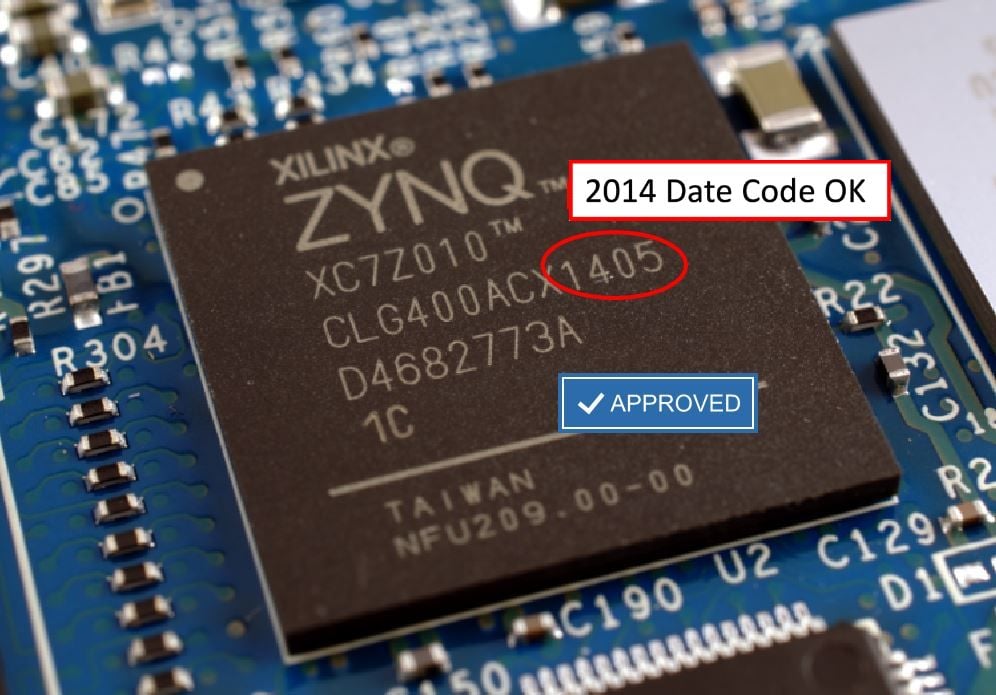Texas Instruments White Paper
In light of the current challenges posed by supply chain volatility, Texas Instruments conducted a comprehensive study on older electronic components, revealing encouraging findings. This research is particularly relevant as it addresses concerns related to the aging of parts and their packaging, offering valuable insights for businesses navigating the complexities of the current environment.
The study meticulously examined various part package types, including BGA’s, traditional leads, and leadless options. Notably, the research explored critical characteristics such as;
- Solderability/Corrosion/Tarnishing
- Label readability and attachment to packaging
- Moisture intrusion & Humidity Indicator Card functionality
- Moisture Barrier Bag ESD functionality
- Tape & Reel ESD functionality
- Cover tape peel strength
Remarkably, the study identified zero issues across all these parameters, even for the most aged parts, spanning an impressive 21 years.
For those facing challenges in sourcing components to sustain production lines, this research is a game-changer. Texas Instruments’ concise white paper serves as a valuable resource to share with concerned colleagues, advocating the consideration of older parts when no other options are available or when the price is significantly more attractive than newer alternatives.
The provided link directs to a technical white paper from Texas Instruments (TI) titled “Semiconductor Product Long-Term Storage Viability.” This document outlines a detailed study conducted by TI to assess the quality, reliability, and usability of semiconductor products after extended periods of storage in a controlled environment.
The Research of Old Components
The research spanned products stored for up to 21 years, evaluating 56 lots with different package types. The investigation utilized the acronym LTS (Long-Term Storage) to identify aged materials. Various tests were conducted on the semiconductor products, including extensive reliability testing, assessment of packaging materials, ESD (Electrical Static Discharge) testing, and solderability evaluations.
The white paper highlights historical changes in U.S. military specifications related to electrical retest requirements after a certain date code window. It also discusses the removal of date code restrictions on component orders and recommendations from the National Electronic Distributor Association (NEDA). The document references earlier studies, dating back to 1998, examining the shelf life of different lead finishes and packaging materials for integrated circuits.
Core Findings of the Study
The core findings of the study reveal that semiconductor devices stored in an environmentally controlled warehouse for up to 21 years exhibited high reliability, with no identified failure mechanisms. ESD performance of tape and reel samples was comparable to new samples, and Humidity Indicator Cards (HIC) remained functional after long-term storage. Desiccants for moisture-sensitive products were found to be active for over 15 years, and there was no degradation in ESD performance or moisture ingress in the Moisture Barrier Bags (MBB) when stored in a controlled environment. Solderability of the package pins met expectations and aligned with the performance of current devices.
The conclusion emphasizes advancements in technology, logistics, and packaging that allow for extended storage durations without compromising product performance. Based on the positive findings, TI has decided to eliminate limitations on storage durations, expressing a commitment to ongoing data collection and adjustments to storage conditions for various products as needed.
If your company is struggling to secure components, AERI stands ready to assist. We specialize in locating both new and quality older electronic components to meet your production needs.




